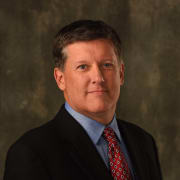Eureka Earth's View of the Masters Is Unlike Any Other

AUGUSTA, Ga. — The vantage point is a pretty good one, all things considered. There’s no need to scurry for a position up near the green, cram into a seat in the bleachers, or stake out a position along the ropes.
David Dobbins also possesses something others who are straining to watch the Masters at Augusta National Golf Club are not allowed to have: a camera.
And he’s used it quite proficiently in recent years to capture images from high above one of the most iconic golf courses in the world, giving us a peak behind a curtain that is almost always closed to but a very few.
Dobbins, 62, is a former U.S. Army contractor who runs MVP Aviation flight school in Augusta. Just last week he took photos and video of Tiger Woods’ private jet after landing and later when taking off after he practiced at the course.
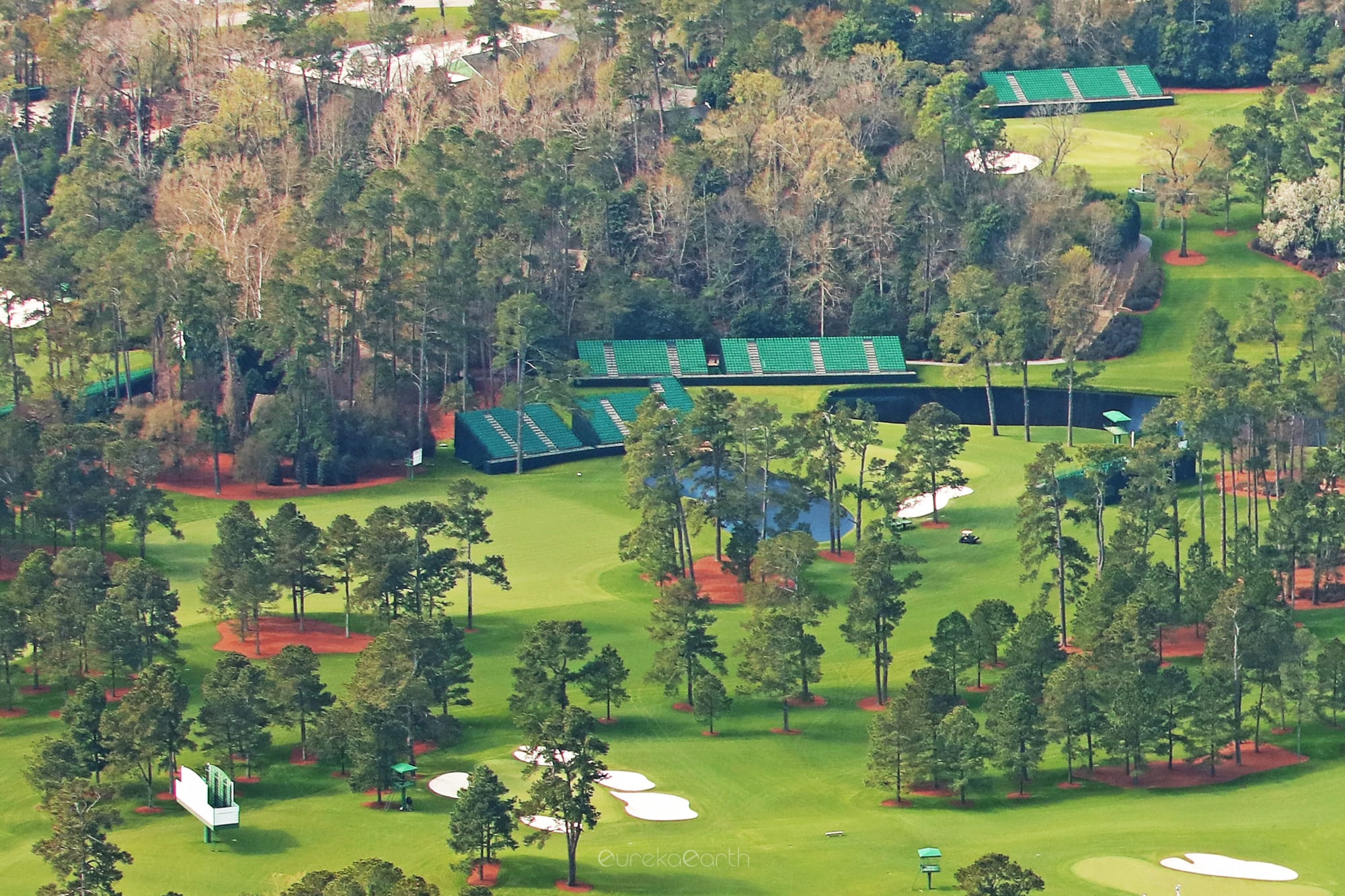
The various bleachers erected for the 2022 Masters as photographed on March 15, 2022.
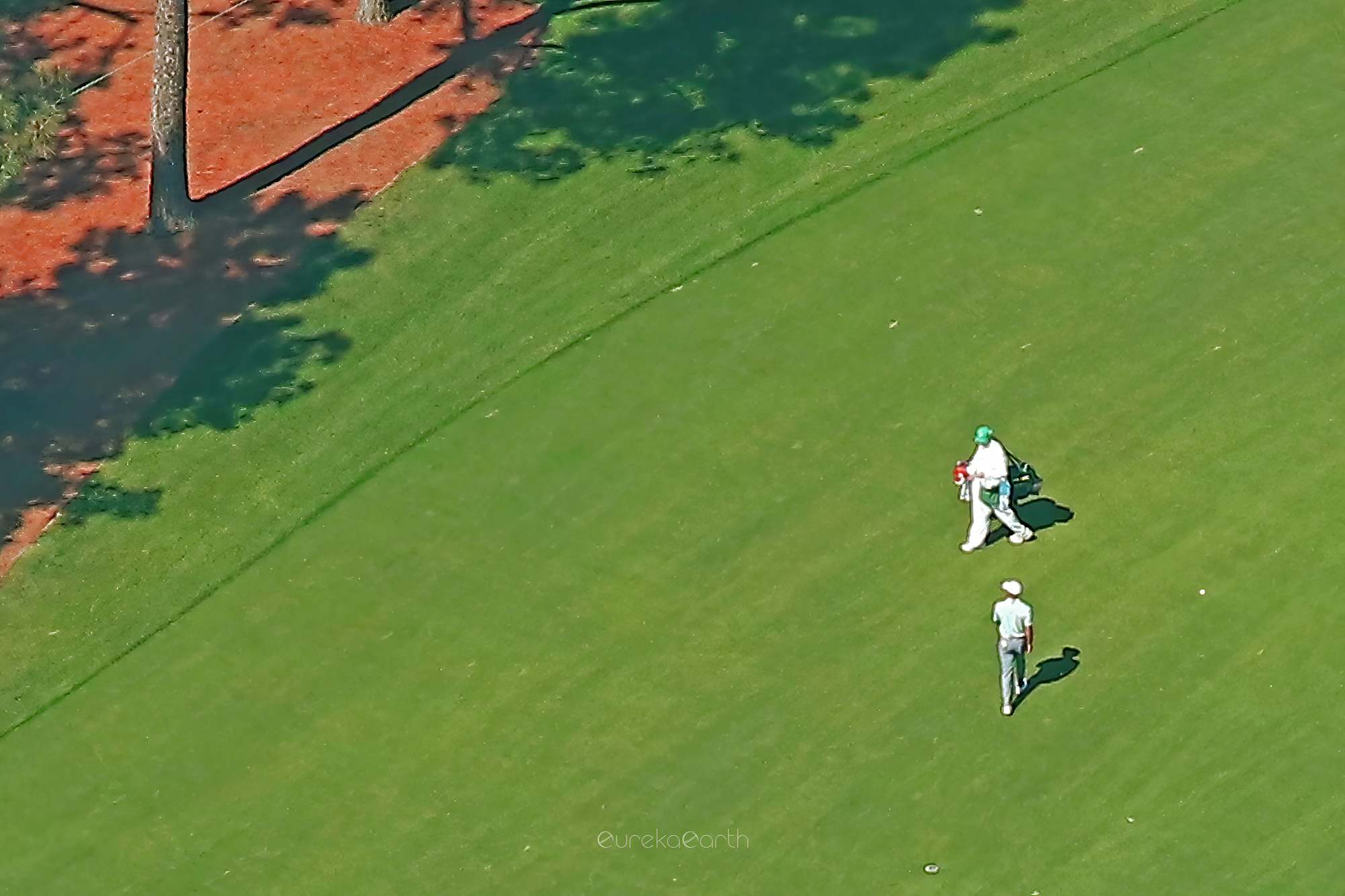
Tiger Woods on the Augusta National grounds in 2019 when he won his fifth Masters title.
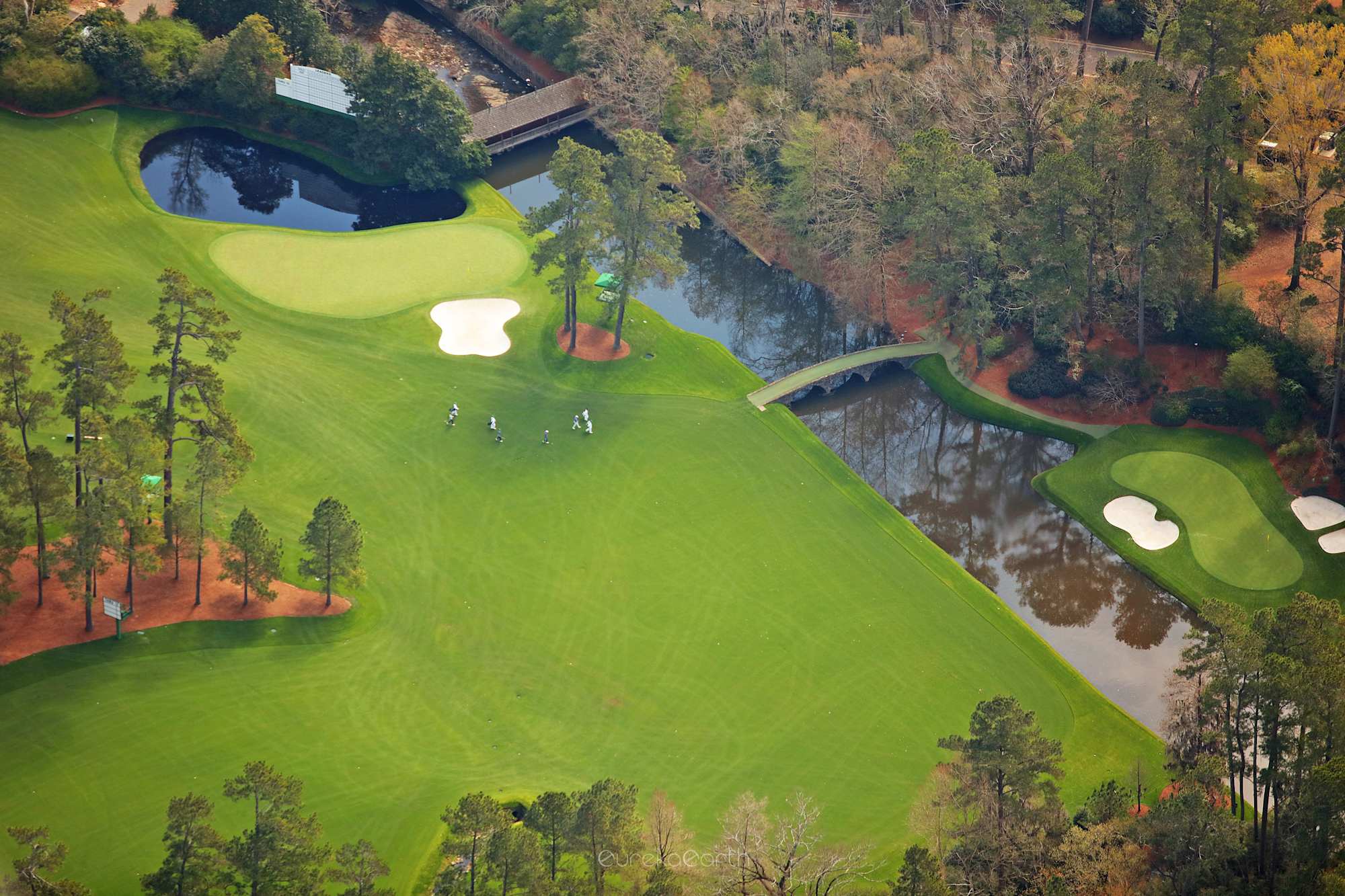
An aerial view of the par-5 11th green, upper left, and par-3 12th hole as photographed on March 15, 2022.
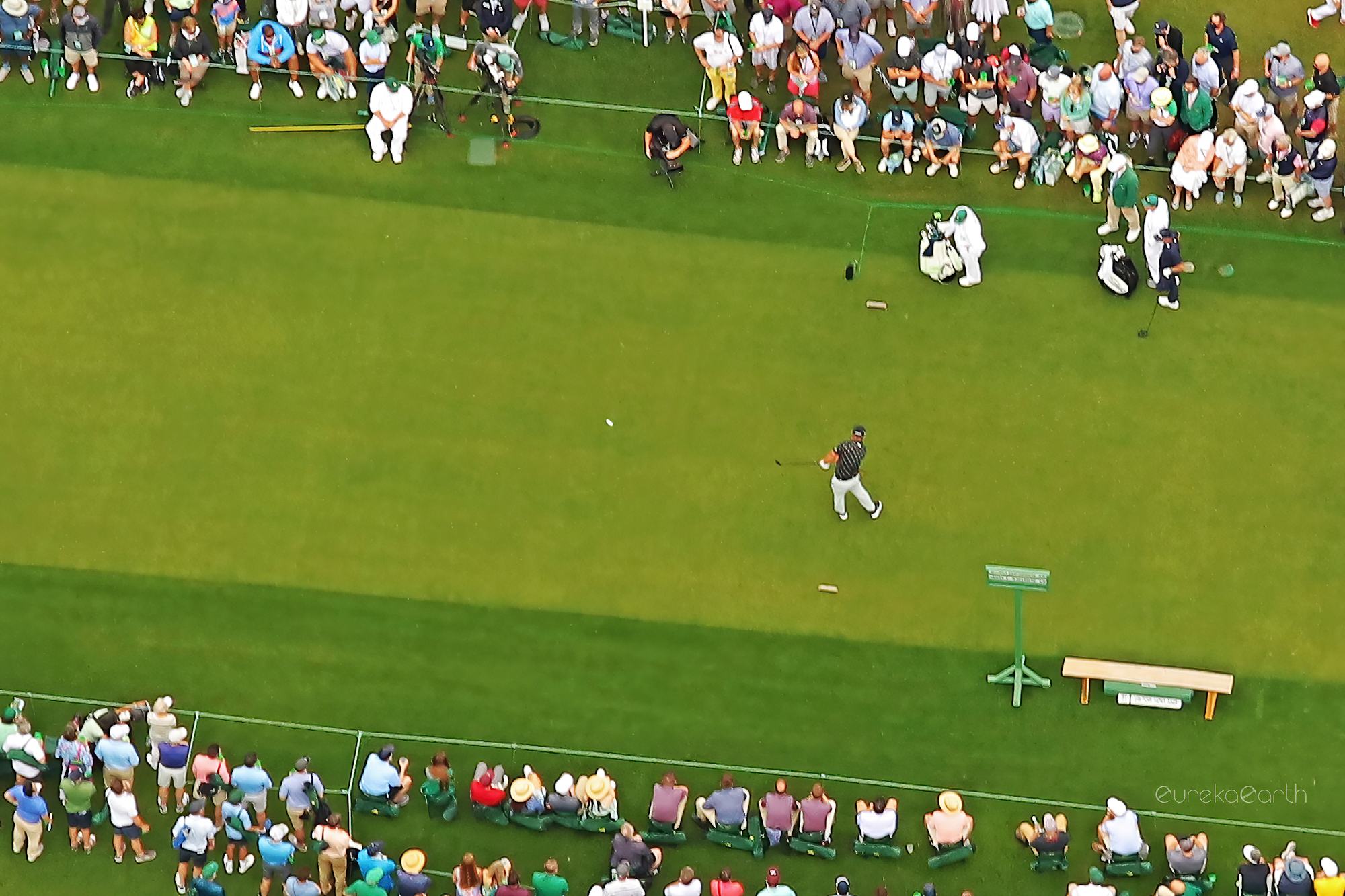
Bryson DeChambeau launches his tee shot (look closely to see the ball) during the Masters' third round in 2021.
But what has set him apart is his aerial video and photography of the club's various course work that is done in the offseason, particularly in the lead up to the 2020 Masters that was played in November due to the coronavirus pandemic.
Dobbins also put out photos last summer on his @EurekaEarthPlus Twitter feed (he also sells them as well as photos from various other endeavors) that show the work being done that resulted in the lengthening of the 11th and 15th holes, sure to be a topic of conversation this week.
“Honestly, the over-seeding metamorphosis just looked like news to me," Dobbins says. “It provided a rare view that patrons don’t’ get to see, and I wanted to share it. One of our greatest pleasures is when a follower of our work responds with “thank you’ and encourages us to “keep up the good work!’ I have to believe it adds a layer of depth to patrons’ fascination with Augusta National and the Masters Tournament. We are happy to be part of that."
Dobbins was referring to the immense change that takes place at Augusta National in the offseason. The club traditionally closes in late May and does not reopen until mid-October.
The rye grass that you see during the tournament — and which makes the course completely green — is overtaken by the prevailing Bermudagrass, often leaving a brown-looking canvas from above. That is by design. The course’s main turf is Bermuda — it changed to bentgrass greens in the early 1980s — and the fairways are often stripped down in the summer.
So are some of the greens, many of which might be covered. Sand might be removed from bunkers. All of this takes place every year, but Dobbins’ photos captured it all from his Cessna 172.
Not that this is easy work.
“In photography, camera shake is of major concern," he said. "In flight there are a lot of variables — updrafts, gusts, turbulence, engine and airframe vibration — they all work against you. An acceptable social media image can be captured rather easily, even with an IPhone. However, it is an entirely different challenge to capture a golf ball moving 190-plus miles per hour after being smashed off the driver of Bryson DeChambeau.
“While at altitude, you become somewhat detached from the event. It is particularly difficult to perceive the dynamic of play on the course. Sometimes it’s just a matter of following the crowd or seeing something out of place on the course, which provides that opportune moment. Provided you have the right equipment, I’d rate the variables to a successful shot at 20 percent perception, 30 percent weather conditions and 50 percent luck."
Dobbins said going back to 1995, he worked in aerial surveillance to support law enforcement. “As a former federal officer, and county sheriff’s deputy, I recognized the value in applying GPS technology to coordinate air and ground units for incident response."
His experiences as a contracted drone pilot led to him seeking a patent and starting this new program.
“I’ve flown and photographed in exclusive airspace many times," he said, noting that Augusta National is among his favorites because it “presents the unique challenge of being effective while maintaining good neighbor status."
And that can be tricky. Augusta National is notoriously private about its business and goes to great lengths to keep it that way. Having someone fly over your golf course might not be appreciated, but Dobbins said so far there have been no issues.
“Certainly, we at Eureka Earth have initiated back-channel dialogues on occasion, and always in the interest of good relations," he said. “We have consistently expressed an attitude of fair play to support our news audience while respecting the members and patrons.
“The club had also engendered courteous exchanges that I will characterize as both professional and informative. We welcome their feedback as that helps us to keep on track with our good neighbor policy."
For golf fans, and Masters fans in particular, what Dobbins has done is hugely popular. He got started a bit at the 2018 Masters won by Patrick Reed, then captured numerous scenes from Woods’ 2019 win, the year they also produced a live feed. The stark difference when there were no spectators in 2020 only added to the allure.
Dobbins said it’s business as usual this year. The hope is for good weather, and he said he’d love it if spectators formed a giant 'U' around the ninth green, to show solidarity with Ukraine. “We’d gladly post that picture," he said.
“I started shooting and developing black and white 620 Kodacolor from a $5 rummage sale Brownie Hawkeye over 50 years ago," Dobbins said. “I love to frame the shot. Flying just became another way to get a new angle.
“However, I must confess that on occasion the view from the cockpit is so breathtaking that I entirely forget the camera. What a privileged existence."
More 2022 Masters Coverage on Morning Read:
- What Players Will Wear at 2022 Masters
- Learning to Play the Masters Just Takes Time, As The Players Say Themselves
- Tiger Woods Plays Augusta National as Speculation Swirls
- 30 Years Later, Fred Couples' Green Jacket Still Resonates
- Golf's (Augusta) National Treasure: 99-Year-Old Jackie Burke
- Updated Field List for 2022 Masters
- This Teenager is Masters' Most Improbable Participant
- A Half-Century of Masters Stories From One Family
- 'It Just Adds to the Event.' Rory McIlroy Hopes Tiger Woods Is Able to Compete in 2022 Masters
